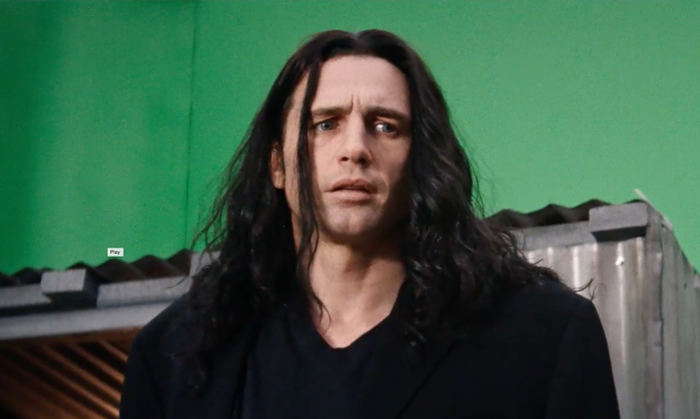In 2003, a man created a film that came to be known as the best worst movie of all time: The Room, written and directed by Tommy Wiseau, who also stars. Despite its lackluster premiere and absence of a theatrical release, it has garnered a cult following complete with midnight screenings, and cosplays. Years later, James Franco—the latest abuser to face the post-Weinstein reckoning—became enamored with the film. The Disaster Artist, produced, directed by, and starring Franco, is partly based on The Room, but primarily tells the story of a memoir by the same name. Written by Wiseau’s costar Greg Sestero, The Disaster Artist details his journey to Hollywood, his inexplicable friendship with Wiseau, and the difficulties of creating The Room—a film so uniquely terrible that it turned Wiseau into a cultural phenomenon.
Fans of the book might find themselves disappointed with the tone and plot of the film. It tries to make Wiseau look good and often undercuts how truly horrific The Room’s production was. As the memoir documents, Wiseau funneled millions (from unknown sources) into useless details, constantly humiliated and spied on the actors and the production crew, refused to provide them with basic necessities, and fired at least half of them before production concluded. Franco acknowledges very few of these moments, instead presenting Wiseau as a mad, yet miraculously inspired genius.
The book tells Sestero’s personal story as he worked with Wiseau and other actors to make the movie a success. The film shifts Sestero’s role and turns him into an audience stand-in. Despite being relegated to the role of the naïve pseudo-narrator, Dave Franco plays Sestero with the same charm that he brings to all his roles, and the Franco brothers’ dynamic wonderfully echoes Sestero and Wiseau’s real-life friendship.
James Franco’s performance is absolutely the highlight of the movie, as he dons a long, ratty, raven-black wig, shadowy makeup, face prosthetics, and several large belts wrapped around his legs. His pitch-perfect imitation of Wiseau’s almost-constantly-drunken demeanor and confusing accent turns the film’s otherwise grounded, somewhat depressing drama into a surreal comedy, as one cannot help but chuckle whenever he opens his mouth.
However, despite Franco’s performance, The Disaster Artist deliberately avoids tackling Wiseau’s more vicious moments. The film addresses a fraction of the many recorded instances of Wiseau’s abusive behaviour, and while Sestero constantly highlights his bizarre narcissism, Franco seems to suggest that this is only one layer of an eccentric genius. His choice clearly illustrates to the audience that his movie is not an adaptation of Sestero’s book but an homage to the uniquely endearing 2003 film and Wiseau himself. He’s not so much a person as a caricature, and Franco’s clear affection for the character conflicts with and undercuts Wiseau’s abusive behaviour. Here’s hoping the Academy doesn’t treat Franco like Franco treats Wiseau.
The Disaster Artist presents the antithesis to the most common Oscar-bait narrative—the struggles of being an artist in Hollywood and creating a masterpiece—and tells the story of a man who utterly failed as a filmmaker, but managed to turn his horrifying creation into a phenomenon. James Franco’s Golden Globes’ hypocrisy, accumulating sexual assault allegations, and pathetic non-apology are deplorable. The movie is funny, harsh, poignant, and uplifting, but at its core, is a film by an abuser celebrating an abuser.








